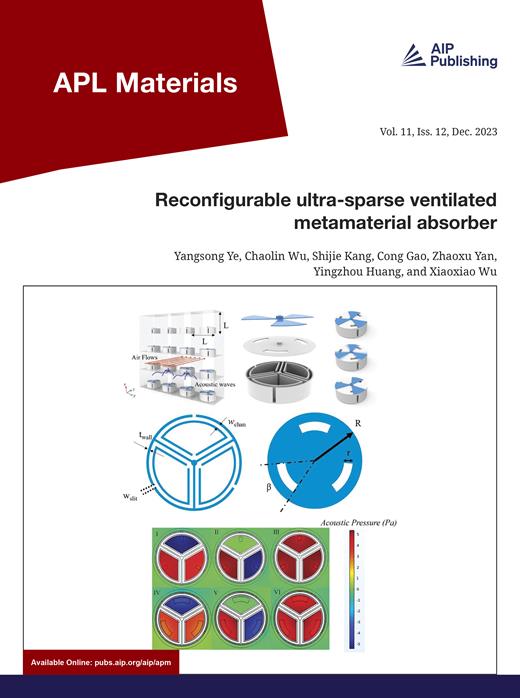基于手性透闪石的垂直自旋阀中的室温手性磁阻
IF 5.3
2区 材料科学
Q2 MATERIALS SCIENCE, MULTIDISCIPLINARY
引用次数: 0
摘要
手性诱导自旋选择性(CISS)可在无需铁磁体或外部磁场的情况下产生自旋电流,从而实现创新的自旋电子器件设计。其中一个例子是由铁磁性和手性材料组成的手性自旋阀,其电阻取决于铁磁体的磁化方向和手性材料的手性。迄今为止,手性自旋阀主要采用手性有机分子,其设备应用有限。手性包晶石结合了无机包晶石和手性有机分子的特性,为探索基于 CISS 的器件提供了一个极佳的平台。然而,以前基于手性包晶的自旋阀仅在低温下表现出磁电阻(MR)。在这里,我们报告了由手性包晶/氧化铝/垂直铁磁体结构组成的手性自旋阀的室温磁阻。据观察,手性磁共振随着温度的升高而增加,这表明在我们的器件中,声子诱导的 CISS 自旋轨道耦合增强起到了关键作用。此外,我们还通过引入具有放大手性的手性分子增强了手性磁共振。这凸显了手性工程在改善 CISS 和相关手性 MR 方面的潜力,从而为尖端自旋电子应用量身定制手性自旋阀提供了可能性。本文章由计算机程序翻译,如有差异,请以英文原文为准。
Room temperature chiral magnetoresistance in a chiral-perovskite-based perpendicular spin valve
Chirality-induced spin selectivity (CISS) allows for the generation of spin currents without the need for ferromagnets or external magnetic fields, enabling innovative spintronic device designs. One example is a chiral spin valve composed of ferromagnetic and chiral materials, in which the resistance depends on both the magnetization direction of the ferromagnet and the chirality of the chiral material. So far, chiral spin valves have predominately employed chiral organic molecules, which have limited device applications. Chiral perovskites, which combine the properties of inorganic perovskites with chiral organic molecules, provide an excellent platform for exploring CISS-based devices. However, previous chiral perovskite-based spin valves exhibited magnetoresistance (MR) only at low temperatures. Here, we report room temperature MR in a chiral spin valve consisting of chiral perovskites/AlOx/perpendicular ferromagnet structures. It is observed that the chiral MR increases with rising temperature, suggesting the crucial role of phonon-induced enhancement of spin–orbit coupling in CISS in our device. Furthermore, we enhanced the chiral MR by introducing chiral molecules with amplified chirality. This highlights the potential of chirality engineering to improve CISS and the associated chiral MR, thereby opening possibilities for chiral spin valves tailored for cutting-edge spintronic applications.
求助全文
通过发布文献求助,成功后即可免费获取论文全文。
去求助
来源期刊

APL Materials
NANOSCIENCE & NANOTECHNOLOGYMATERIALS SCIE-MATERIALS SCIENCE, MULTIDISCIPLINARY
CiteScore
9.60
自引率
3.30%
发文量
199
审稿时长
2 months
期刊介绍:
APL Materials features original, experimental research on significant topical issues within the field of materials science. In order to highlight research at the forefront of materials science, emphasis is given to the quality and timeliness of the work. The journal considers theory or calculation when the work is particularly timely and relevant to applications.
In addition to regular articles, the journal also publishes Special Topics, which report on cutting-edge areas in materials science, such as Perovskite Solar Cells, 2D Materials, and Beyond Lithium Ion Batteries.
 求助内容:
求助内容: 应助结果提醒方式:
应助结果提醒方式:


